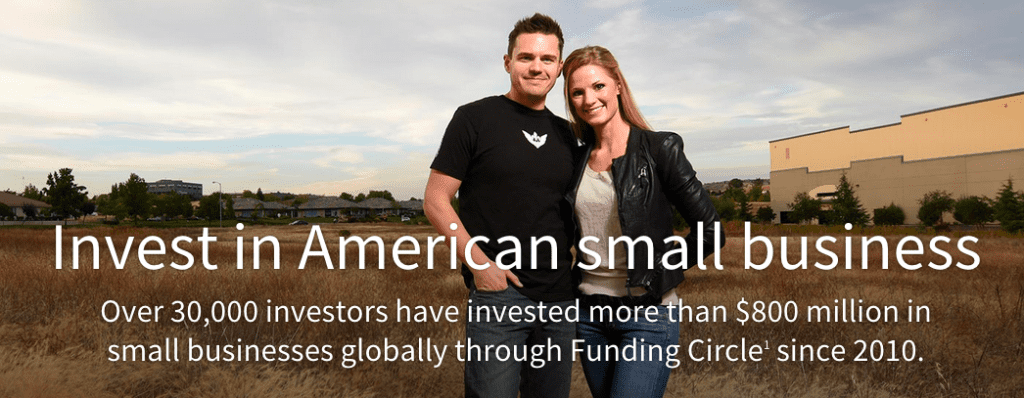It has been a big week for industry news. Yesterday, Funding Circle USA launched their fractional marketplace aimed at individual accredited investors. In what is the first offering of its kind in this country investors can now invest directly in fractions of small business loans.
Until now, Funding Circle investors could invest in whole loans or through Funding Circle’s own fund: FC Partners Fund 1 (full disclosure: Lend Academy Investments P2P Fund is an investor in FC Partners Fund 1). And to invest in whole loans that average around $100,000 you need to have a very large portfolio to be fully diversified.
A Minimum Investment of $1,000 per Loan
I should point out immediately that we are not talking about $25 loan fractions here. Funding Circle is only open to accredited investors and they have set the minimum investment to $1,000 per loan. They have also set the minimum account total to $50,000.
I chatted with Sam Hodges, the co-founder and U.S. managing director of Funding Circle, earlier this week about this news. He told me that Funding Circle currently has 500 investors who have expressed interest in their fractional product and he expects to grow that number to many thousands by the end of the year.
About Funding Circle’s Fractional Marketplace
Like Lending Club and Prosper, Funding Circle has a whole loan and a fractional loan marketplace. But for investors used to seeing hundreds of available loans on fractional platforms you will need to adjust your expectations here. As of this writing there are three loans available for investors. So, it will take some time to build up a diversified portfolio.
Having said that loan volume at Funding Circle is increasing rapidly. They did just under $10 million in loans in December and will do more than that this month. So, we should see loan availability continue to increase.
Loans are added to the marketplace three days a week on Monday, Wednesday and Friday. While Funding Circle does have an API it is only functional for investing through the whole loan marketplace today. There is no way to invest programmatically through the fractional marketplace (although that capability is coming) so there is no mad rush when loans are added.
Investors do get quite a bit of detail on each company. Funding Circle shares a short description, location, years in business, employees, industry, company financials, personal FICO of owner/s and information on bankruptcies if any. Company name and the names of the owners are not disclosed.
There are four loan grades at Funding Circle: A+, A, B, C with expected annual loan losses ranging from 0.6% for A+ loans to 3.3% for C-grade loans. The average interest rate is in the low teens and the average loss rate is in the low single digits which means expected returns are in the double digits.
To execute the fractional transactions Funding Circle has established a broker dealer called Funding Circle Securities. The notes themselves are issued by Funding Circle Notes Program, LLC. Investors can setup taxable accounts or invest through an IRA (either traditional or Roth).
My Thoughts
I am very happy that Funding Circle has finally launched a fractional marketplace for investors. They have been very successful attracting investors in the UK and I think they will do very well here. I would obviously like to see them open to all investors, not just those who are accredited, and I think a lower minimum investment would be helpful, too.
These changes are likely coming although not any time soon. While Funding Circle would love to be available to regular investors, like Lending Club and Prosper, the legal and administrative costs for establishing this are too great.
So, this is a good first step. For accredited investors with six figures or more in consumer P2P loans Funding Circle allows for added diversification with exposure to small businesses. Not only that but you can feel good about the fact that you are directly helping American small business.
Investors should keep in mind, of course, that even with the expected loss rates being low this kind of investing carries significant risk and everyone should conduct their own due diligence. This article is provided for information purposes only and should not be considered investment advice.


